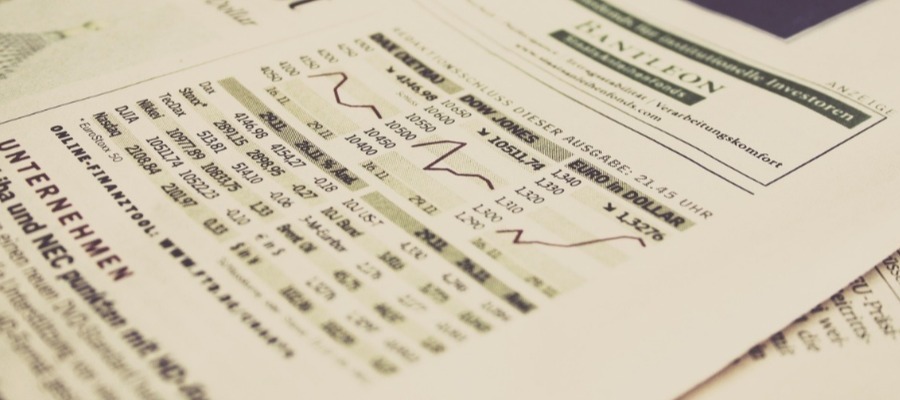How do you invest one million pounds? The short response, you have a lot of choices, but it starts with a couple of decisions to make in terms of investment length and risk level. It then moves on to the choice of investment and how complex that investment needs to be.
If you think this million-pound investment will pay for your retirement and then be handed over to your children, it may be a good idea to speak with a financial advisor who would be able to discuss possible strategies to reduce inheritance tax. Remember, I’m not a qualified financial advisor, and I don’t have a million pounds to invest today, but if I did, below is how I would invest it.
Emergency Fund
I’m a firm believer in having an emergency fund of cash that I can quickly get hold of in an emergency. Personally, I have £6,000 of cash in my bank account that I don’t invest, I don’t spend, and I leave for that time when the worst happens, and I need cash urgently.
If I had a million pounds to invest, the first thing I would do is bolster that emergency fund. If I were retired, I would make sure there were 12-to-18 months of spending sat in my emergency fund. This would mean that I would not have to touch my invested savings in the event of a correction or a bear market.
As we have seen over the last 100 years, bear markets generally only last for a couple of years and having emergency fund would allow me to leave this money invested. In a bear market, when asset values have reduced by 20% or, the last thing you want is to be forced to sell at a deflated price. By having a larger emergency fund, you can wait until prices have recovered before you need to start withdrawing money from those assets.
First Question – Timeline
Before you think about any investments, the first question you need to ask yourself is your investment timeline. Your investment timeline comes down to when you want the money back and is important as it shows what investments are suitable for you, and whatnot.
As an example, I recently read an article about Matthew Robson, whose father bought him a bottle of the 18-year-old Macallan single malt every year throughout his life, since his birth. At the age of 28, with 28 bottles of whisky, he sold them to an international buyer for £44,000. Matt’s father estimates he spent just over £5,000 on those bottles over the years, representing a serious profit, but he has waited 28 years to achieve this result.
If your time horizon is five years, possibly investing in wine is not the right investment for you.
Second Question – Risk Level
Risk and your possible reward is the second question you need to ask yourself. If you’re retired, or close to retirement, then possibly you’re looking for a low-risk investment, where your return is limited, but the risk is much lower. If you’re still a while away from retirement, then possibly you can take more risk on, knowing that if things do go wrong, you have time to make money.
Personally, if I had a million pounds to invest, I would split the funds to sections. 50% would be placed into low-risk investments, 40% into medium-risk investments, and 10% into high-risk investments.
Keep It In A Bank Account
There are two problems with keeping substantial sums of cash in a bank account. Firstly you get little or no interest, and secondly, it’s not secure. If in the unlikely event, the bank or building society falls into financial difficulty, a million pounds is not covered.
In the UK, money held in an authorised bank or building society is protected by the Financial Services Compensation Scheme for up to £85,000 per person. This would double for a joint account to £170,000, but it still would mean that you’d lose over £800,000. The only way to keep a million pounds in a bank account safely is to split it into different joint accounts, with different banks, each with £170,000.
Wine Investment
Investing in wine is an excellent investment for the long term. The basic idea behind wine is that it’s a wasting asset, once it’s been drunk, you cannot drink it again. Wine connoisseurs across the world, love drinking prestigious, first growth wines such as Leoville Las Cases, Mouton Rothschild, Haut-Brion, Chateau Lafite Rothschild, Chateau Margaux, Cabernet Sauvignon, and Chateau Latour.
The problem, each of these vineyards only produces a minimal number of cases each year. As an example, Chateau Latour only produces between 10,000 and 12,000 cases each year. Once it’s gone, it’s gone.
Typically there three ways to invest in wine, Physical were you hold the bottles yourself, wine-specific investment funds and collective investments through a wine broker. Which way you choose to invest, you need to make sure your wine is stored correctly. This means that it’s stored in a climate-controlled facility with a consistent temperature (around 55° F), humidity control (60% relative humidity), and should be kept away from light and vibration.
Short-term gains are limited, but according to Live-Ex, wine has delivered 13.6% annualised returns over the past 15 years.
Art
I have never bought, however, I have heard some great things about it over the years. One of my friends bought two paintings from the contemporary artist Diego Singh for about £8,000 ten year years ago. They are worth £40,000 each today.
Art is both a risky investment and non-liquid. Every piece of artwork is unique to an artist. The problem is that like other markets, the art market has ups and downs, but also each artist has ups and downs. You can buy art and suddenly find the artist is out of favour with the market and because it’s a non-liquid commodity, you cannot easily sell it.
If you want to invest in art, you can either start buying yourself, or you could try to invest through an art investment platform such as Masterworks. In this situation, you don’t actually own the painting, but you own shares in the piece of art. The advantage of this platform is that it allows you to buy shares in high-value works vetted by experts for authenticity.
Peer to Peer Lending
The basic principle behind a Peer-to-peer lending (or “P2P”) is for you to lend money directly to either another individual or business, and they pay you interest. This is called Peer-to-Peer lending, and websites such as Lending Works, RateSetter and Funding Circle facilitate this transaction.
In principle, it sounds like an excellent investment, but in reality, it’s not that simple. Personally, I’ve tried Lending Works and have averaged 5% returns with very little volatility, but there are a few risks that you need to be aware of. Firstly, your investments are not covered by the FSCS, even though lenders are regulated.
Secondly, while its relatively liquid, with old investors being bought out by new investors, there is a question of what would happen if interest rates were to rise. I currently get around 5%, but if interest rates rose to 2%, I would be able to get 7% through a platform, but who will buy out my current load at a lower, less attractive rate?
Robo Advisers
A Robo-adviser is an online investment where you answer 10-15 simple questions about your investment time horizon and risk level and the program automatically allocated you a suitable basket of investments, and most importantly, manages these investments for you on an ongoing basis.
The great thing about a Robo adviser, rather than your traditional investment adviser, is the price. Most Robo advisers will charge you less than 1% to manage your money.
Property
If you’re buying property, you generally have three options, Long-term let’s, Short-term lets and property development.
- Long-Term Lets – Very simple, you buy a property for £750,000. You pay the stamp-duty and buyers fees, possibly you need to upgrade it slightly, and then you rent it out. The return on investment is low unless property prices increase substantially, but there is minimal risk involved.
- Short-Term Lets – You could very easily buy 10, £100,000 flats and rent them out short-term to tourists if you live in the right location. Short-term rentals are all the rage these days thanks in part to websites such as Airbnb. Returns are much better, but you run the risk that they’re not rented out, and you will need to clean and prepare each flat after a guest departure.
- Property Development – the basic principle, you buy a property and either upgrade or extend it, in the hope that it will increase value when you come to sell it. Remember, there are cost’s to buy and cost’s to sell properties, but if you get it right, returns can be substantial.
Commodities
Commodities such as Gold and Silver are often used as a long-term hedge against inflation and a potential increase in interest rates. While both have increased substantially over the last few years, experts feel there is further room to run.
There are two ways to invest in Gold and Silver. Either you can buy an ETF through your broker, or you can invest in the physical material.
If you’re investing in physical gold or silver, you will need to pay for storage fees and insurance.
Final Thoughts
However you choose to invest your million pounds, the key point is to try and keep advisor fees as low as possible. Fees erode investments quickly, and you’d be horrified how much they cost if left unchecked.
As an example, 2% a year on a million pounds, is £20,000 per year. A million pounds growing at 10% a year for ten years would be worth – £2,593,742.
Add in 2% in fees each year, and it’s now worth 2,139,018 or massive £454,724 less.






